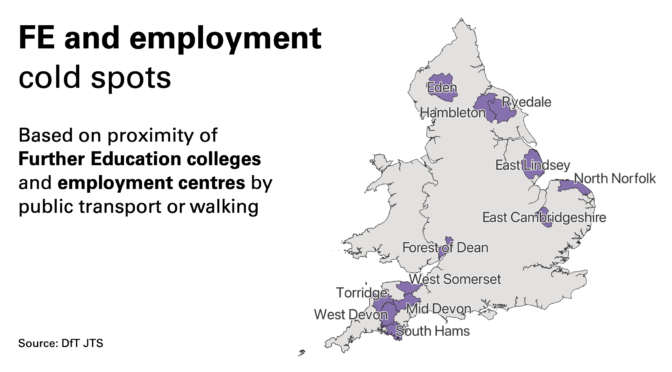When it comes to providing decent post-16 pathways for young people who don’t want to take a purely academic route, there are lots of important policy questions to consider and solve. How do we improve attainment at 16? How should we fund apprenticeships? How can we build better strategic partnerships between employers and educational institutions? How can we align vocational routes with emerging labour market need?
These are all important considerations. But for young people who want to pursue a high quality work-based post-16 route, there’s often a more immediate and practical barrier in their way: transport. For those living outside urban centres – and particularly those who don’t have access to a car – simply getting to college or work can be a huge task, and a big barrier to progression.
The transport issue doesn’t get much attention. It doesn’t have the cachet of a new T-Level or an extension of the Apprenticeship Levy. But if you speak to young people it really matters. And when I was reviewing skills reports recently to advise a Local Enterprise Partnership, transport stood out as a key challenge for young people, post-16 providers and employers in rural areas.
The solution isn’t obvious. Bus services are in managed decline. Remote or hybrid learning and working don’t serve many young people well. Colleges are consolidating, occupying fewer and larger sites.
There must be pockets of innovative practice we can learn from; insights we can draw from detailed case studies of places grappling with these issues first hand. The first step is to identify where those places are. To make a start I’ve mapped some of the coldest spots for FE and employment access, using JTS data from the DfT on journey times and proximity.
I wonder how young people would describe the difficulties they’re facing in these areas, and what local policymakers are doing to solve them?
